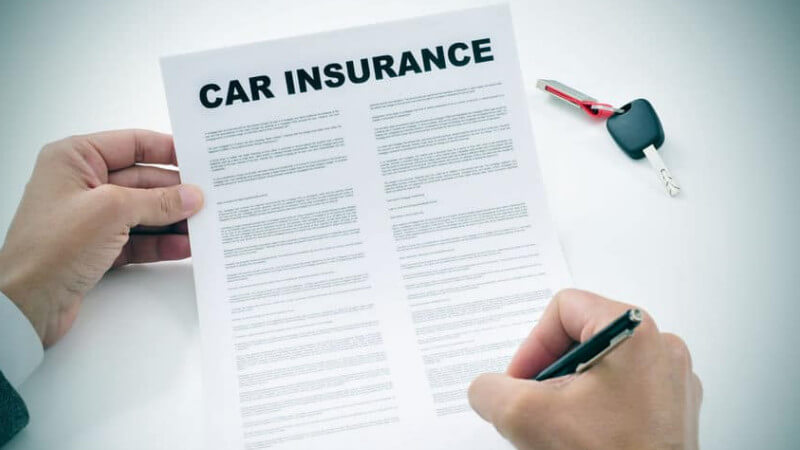Want to save money on your auto coverage without breaking the law? These proven car insurance tips can help you reduce costs while keeping full protection. The good news is, you don’t need to cut corners or commit fraud—there are entirely legal ways to get lower premiums when you understand how insurers price risk. This auto insurance guide breaks down actionable, step-by-step methods any driver can follow in 2025.
We’ll explore shopping smart, improving your risk profile, and using hidden discounts that many people overlook. By the end, you’ll know exactly how to make your policy more affordable without compromising safety or coverage.
1. Compare Quotes—Loyalty Doesn’t Always Pay

The easiest and most effective car insurance tip is to compare quotes regularly. Insurers constantly adjust their pricing models, meaning your loyalty could be costing you hundreds every year. According to the Insurance Information Institute, shopping around every 6–12 months can yield savings of up to 25%.
Start by getting at least three quotes from major carriers like Progressive, GEICO, and State Farm. Keep coverage limits identical to get a fair comparison. For example, a 35-year-old with a clean record could pay $950/year with one insurer and $1,250 with another for identical coverage. That’s real, legal savings with no policy compromise.
Before you renew, revisit our internal resource on Understanding Car Insurance Basics to check what each coverage type really means—you might find unnecessary add-ons.
2. Raise Your Deductible Strategically
Increasing your deductible is one of the most direct ways to achieve lower premiums. The National Association of Insurance Commissioners estimates that raising your deductible from $250 to $1,000 can cut collision and comprehensive costs by up to 40 percent.
Example: If your annual premium is $1,200, raising the deductible could lower it to $850. However, make sure you can afford that higher deductible in case of an accident. Keep an emergency fund for such situations so you’re prepared.
As vehicles age, consider dropping comprehensive or collision coverage. The general rule: if your car’s market value is less than 10 times the premium you’re paying for those coverages, dropping them may be cost-effective. Confirm value estimates at Kelley Blue Book or Edmunds.
3. Drive a Vehicle That’s Cheap to Insure

Car type matters more than most people think. Sports cars, luxury SUVs, and electric vehicles with expensive parts usually cost more to repair—and to insure. Safer, lower-value cars tend to earn cheaper rates.
The Allstate Insurance resource confirms that premiums rise with higher repair costs, theft probability, and horsepower. So if you’re shopping for a new car, factor in the insurance rate. For instance, a Honda Civic EX may cost $850 a year to insure, while a Mustang GT could exceed $2,000 for the same coverage.
Tip: Use tools like Bankrate’s list of cheapest cars to insure to see which models save money long-term.
4. Keep a Clean Driving Record
Your driving history is a huge factor in your rate calculation. Every accident or ticket can affect your premiums for 3–5 years. According to Consumer Reports, safe drivers can pay 40% less than those with violations.
Use defensive-driving techniques, follow speed limits, and consider enrolling in safe-driver courses approved by your insurer. Many companies, including Progressive, offer discounts after course completion.
Another tactic: enroll in telematics programs like Drivewise by Allstate or Drive Safe & Save by State Farm. These apps track your mileage, braking, and acceleration—and reward safe habits with up to 30% discounts.
5. Bundle Policies for Big Discounts

Insurers often offer 5–20% off if you combine auto, home, or renters insurance. Liberty Mutual calls bundling one of the simplest, most reliable discounts available.
Example: A homeowner paying $1,200 for auto and $1,000 for homeowners might pay $1,900 total when bundled—a $300 annual saving. Other stackable deals include autopay discounts, online-only billing, and multi-vehicle savings. Check eligibility each renewal period to maximize cumulative reductions.
6. Maintain Good Credit (It Really Matters)
Many drivers don’t realize that credit-based insurance scores influence rates in most states. The NAIC reports that good credit can translate to savings of 15–25% annually.
Keep your utilization below 30%, pay all bills on time, and dispute errors on your credit report at AnnualCreditReport.com. Updating your address and vehicle use (e.g., working from home vs. daily commuting) can also qualify for lower rates. Always inform your insurer about life changes that reduce risk.
7. Use Legitimate Discounts and Group Programs

Ask for every discount you qualify for—many companies don’t apply them automatically. Common ones include good-student, military, senior, defensive-driver, and low-mileage discounts. USAA offers some of the best military savings, while GEICO’s discount list covers federal employees, affinity groups, and alumni associations.
Real-world example: Sarah, a 28-year-old teacher, added an educator discount and installed an anti-theft device—saving $120/year. Always ask what discounts your insurer offers; sometimes new ones launch mid-year.
8. Drive Less, Save More
Fewer miles = lower risk. Usage-based insurance (UBI) and pay-per-mile policies can reward low-mileage drivers with significant discounts. Metromile and Nationwide SmartMiles are examples of pay-per-mile programs where you pay based on actual driving habits.
Suppose you commute 4 days per week instead of 6; your annual mileage might drop 20–25%, saving 10–15% on insurance. Combine this with good driving behavior to maximize results.
9. Review Annually and Update Life Changes
Your situation changes—so should your policy. Marriage, moving, new vehicles, or reduced driving distance can all qualify for rate changes. According to ValuePenguin, reviewing coverage once a year ensures you’re not overpaying.
Check renewal offers about a month before your current policy expires. Ask your provider to re-rate your profile considering recent life updates. A simple call or online form can uncover discounts you didn’t know existed. Before making major coverage decisions, review our internal resource How to Evaluate Insurance Coverage Options for guidance on limits and endorsements.
10. Avoid Illegal Shortcuts

Never falsify information just to cut costs. “Fronting”—listing someone else as the main driver when you’re actually the primary—is illegal and could void claims. Aviva Insurance UK warns drivers that such misrepresentation can lead to prosecution.
Also avoid omitting household drivers or falsifying address/usage details. Savings from dishonesty are temporary; penalties and denied claims can cost far more. Focus instead on legitimate tactics—accurate data, verified discounts, and consistent good behavior.
Conclusion: Smart, Legal Savings That Add Up
Reducing your premium doesn’t require risky shortcuts or minimal coverage. With these car insurance tips, you can achieve sustainable lower premiums while staying fully protected. Start by shopping around, increasing your deductible wisely, improving your credit, and updating your insurer whenever your circumstances change.
Regular reviews and transparent communication can save you hundreds each year. Apply these lessons from our auto insurance guide today—and treat your car insurance as a financial product you manage strategically, not a static bill you just pay.
For deeper insights, read our in-depth tutorials on Understanding Car Insurance Basics and How to Evaluate Insurance Coverage Options to make smarter, data-driven decisions next renewal.

Leave a Reply